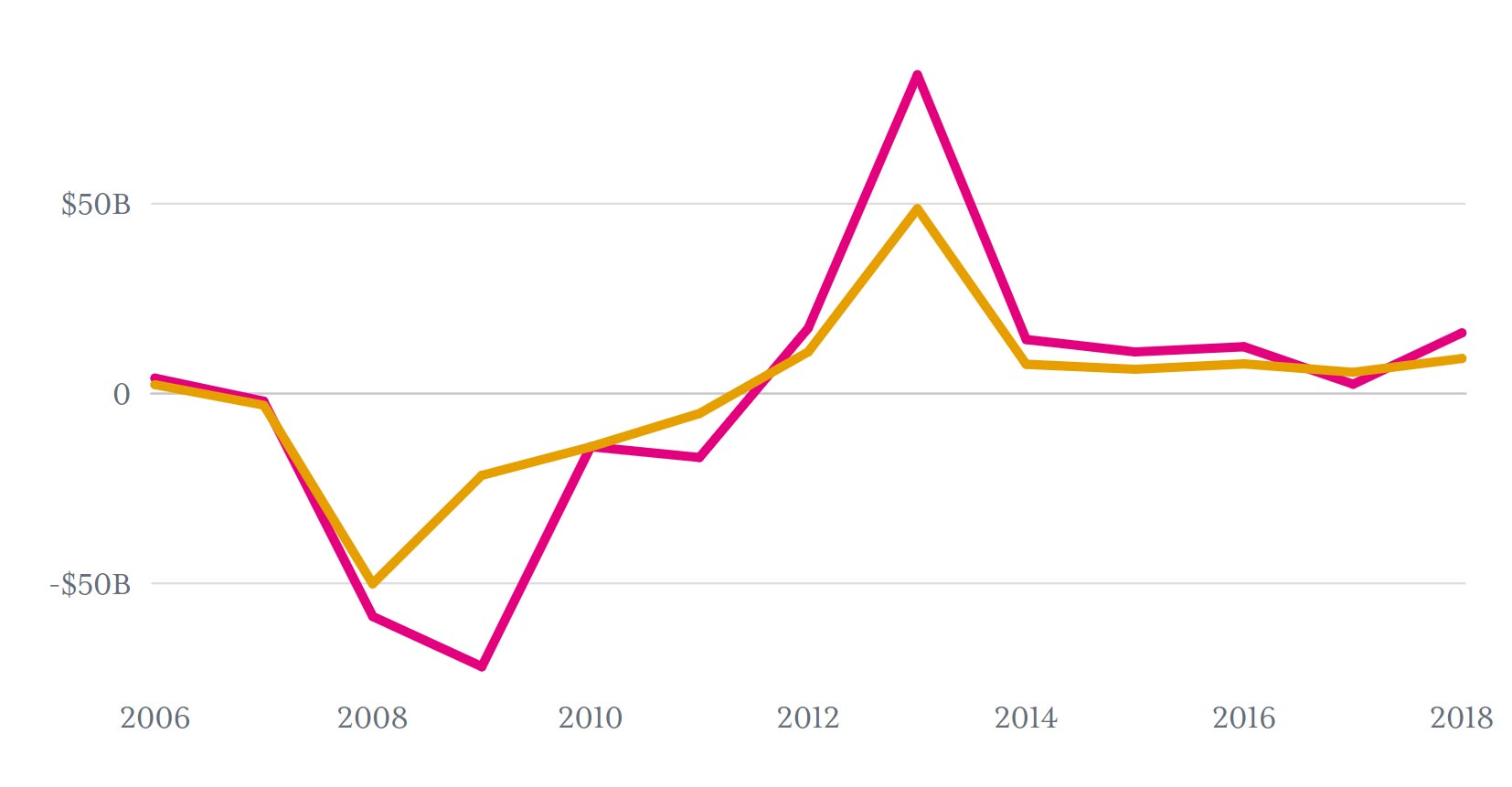Economy
As union membership declines, how common are labor strikes in the US?

With the COVID-19 pandemic limiting movement and disrupting economic activity, retail sales dropped 8.7% in March, the largest month-to-month decrease since the Census Bureau started tracking the data.
Overall retail sales, including food services such as restaurants, fell from $529.3 billion in February to $483.1 billion in March.
The largest month-to-month drop previously in the Census Bureau’s Advance Retail Sales data was a 3.9% drop between October 2008 and November 2008. The data goes back to 1992.
The economic impact of the pandemic and the travel restrictions associated with it varied by the type of retail business. Sales for motor vehicles and parts dropped by 25.6% from $106.6 billion in February to $79.3 billion in March. Clothing sales plummeted 50.5% from $22.4 billion to $11.1 billion. Meanwhile, sales at grocery stores increased 27% from $58.4 billion to $74.2 billion.
| Category | March 2020 sales ($B) | February 2020 Sales ($B) | March 2019 Sales ($B) | Change between 2/2020 and 3/2020 | Change between 3/2019 and 3/2020 |
|---|---|---|---|---|---|
| All retail and food services | 483.1 | 529.3 | 514.8 | -8.7% | -6.2% |
| All retail and food services except for automobile-related | 403.8 | 422.7 | 410.9 | -4.5% | -1.7% |
| All retail and food services except for gas | 447.7 | 486.6 | 471.7 | -8.0% | -5.1% |
| All retail and food services except for automobile-related and gas | 368.4 | 380.1 | 367.9 | -3.1% | 0.2% |
| All retail | 434.5 | 463.2 | 451.8 | -6.2% | -3.8% |
| Motor vehicle and parts dealers | 79.3 | 106.6 | 103.9 | -25.6% | -23.7% |
| Auto and other motor vehicles | 71.9 | 98.7 | 95.8 | -27.1% | -24.9% |
| Furniture and home furnishings stores | 7.3 | 10.0 | 9.7 | -26.8% | -24.6% |
| Electronics and appliance stores | 6.9 | 8.1 | 8.2 | -15.1% | -15.9% |
| Building material, garden equipment and supplies dealers | 33.8 | 33.4 | 31.4 | 1.3% | 7.6% |
| Food and beverage stores | 82.1 | 65.4 | 64.1 | 25.6% | 28.0% |
| Grocery stores | 74.2 | 58.4 | 57.3 | 26.9% | 29.3% |
| Health and personal care stores | 30.8 | 29.5 | 29.5 | 4.3% | 4.3% |
| Gas stations | 35.3 | 42.6 | 43.1 | -17.2% | -18.0% |
| Clothing stores | 11.1 | 22.4 | 22.5 | -50.5% | -50.7% |
| Sporting goods, hobby, musical instrument, and book stores | 5.0 | 6.5 | 6.4 | -23.3% | -22.7% |
| General merchandise stores | 63.8 | 59.9 | 59.3 | 6.4% | 7.5% |
| Department stores | 8.8 | 10.9 | 11.5 | -19.7% | -23.9% |
| Miscellaneous store retailers | 10.3 | 12.0 | 10.8 | -14.3% | -4.9% |
| Nonstore retailers | 68.8 | 66.7 | 62.7 | 3.1% | 9.7% |
| Food services and drinking places | 48.6 | 66.1 | 63.0 | -26.5% | -23.0% |
Nonstore retailers, meaning an array of businesses that don’t have (or aren’t primarily dependent on) brick and mortar locations, had a 3.1% growth in sales from February to March.
It’s still unclear what effect federal and local government actions will have on these declines. At the federal level, the $2 trillion coronavirus stimulus bill had provisions aimed at encouraging consumer spending, increasing unemployment benefits and helping small businesses. Americans will begin receiving coronavirus stimulus checks mid-April, it will be interesting to see what impact those funds will have on this downward trend in spending.
Economy
Economy
Economy
Economy
Newsletter
Keep up with the latest data and most popular content.


